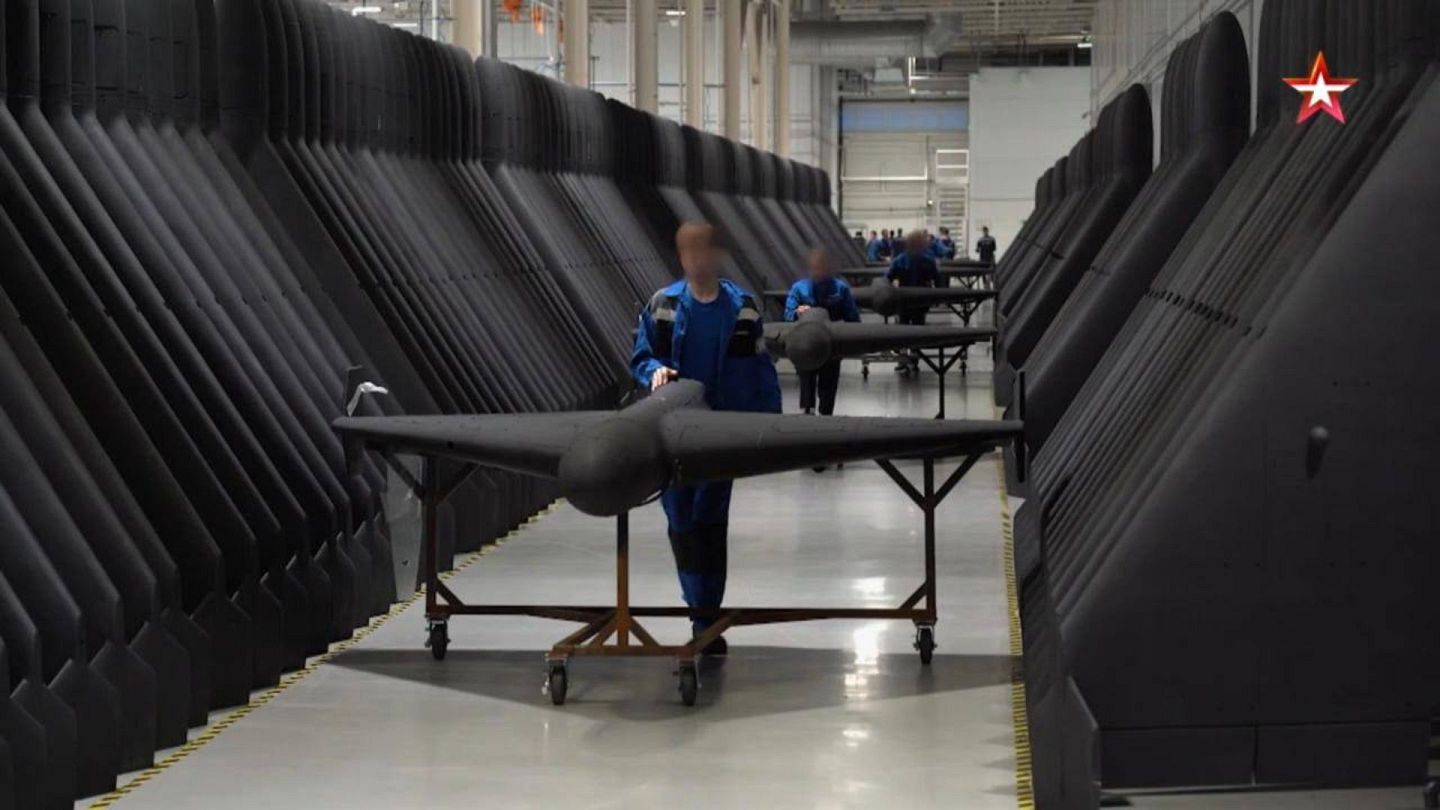Russia ramps up drone production using teenage workers, video shows
The Yelabuga plant in Russia, employing teenagers, produces thousands of drones each month to further strengthen Putin's strategy of nightly attacks on Ukrainian cities and other civilian targets.
Russia is producing thousands of long-range suicide drones monthly at a factory staffed partly by teenagers, as Moscow prepares to potentially launch 2,000 drones nightly against Ukraine.In a video shared by the Russian Defence Ministry's television network featuring the Yelabuga plant near Kazan, students and staff are seen in rows on the factory's production line, producing black Geran-2 drones, the Russian version of the Iranian Shahed.Teenagers as young as 15, after finishing ninth grade, are invited to work at the factory, and most of them come from the nearby technical college, according to the video.“Everywhere you look, you see young people at work,” says the video's narrator. The camera also shows dozens of teenagers assembling drone parts and working behind computers in the factory's hall.Another shot shows a banner saying "Kurchatov, Korolyov and Stalin live in your DNA", a reference to Soviet physicist Igor Kurchatov, considered to be the father of the Soviet atomic bomb programme, and Serhiy Korolyov, the lead spacecraft designer during the Cold War's Space Race.Ironically, Korolyov was Ukrainian.Tehran-made Shahed drones and their Russian variant have become a key tool in Russian President Vladimir Putin's plans to relentlessly bombard Ukrainian cities and other civilian targets in an attempt to demoralise the country defending itself from Moscow's all-out war, now in its fourth year.The video also said that Putin, while visiting the Yelabuga plant, proposed that a similar model should be replicated throughout the country, to supposedly reduce Russia's dependence on Iranian imports.European defence officials believe that as production increases, Russia plans to deploy thousands of cheap Shahed drones every night in an attack on Ukraine. The black paint of the Russian variant is also indicative of a growing shift toward night raids.According to estimates, Russia now produces more than 5,000 long-range drones per month, and in the first half of 2025 alone, up to 18,000 of them are expected to be built at the Yelabuga plant.Russia now targets Ukraine with an average of more than 500 UAVs and missiles every night, and analysts believe Moscow's ability to strike Ukraine could soon amount to 1,000 drones and missiles a day.Russia carried out the most extensive attack on the country on 9 July, launching 741 missiles and drones into Ukrainian cities and regions.Drones like Shaheds are relatively inexpensive, with each costing between €30 and €45.At the same time, Ukraine's air defence systems, supplied by the West, are costly. Each Patriot missile used to intercept Russian launchers, for example, is priced at about $5.5 million.Top German military official, Generalmajor Christian Freuding warned last week that Ukraine and its allies must expand defensive measures to create cost-effective air defences to counter Russian attacks, which are likely to become even bigger.According to Generalmajor Freuding, Russia is attempting to acquire the capability to launch 2,000 drones at night, which would pose a significant challenge to defence systems.The Yelabuga facility was established in 2023 within the Alabuga Special Economic Zone, located near the city of Kazan. It lies on the banks of the Kama River, which is connected to the Caspian Sea via the Volga River — providing a direct line of trade with Iran.The Geran-2 drone is some 3.5 metres long, weighs around 200 kilograms and can carry a 50-kilogram warhead. It can attack targets up to 1,800 kilometres away at a speed of 300km/hr.


